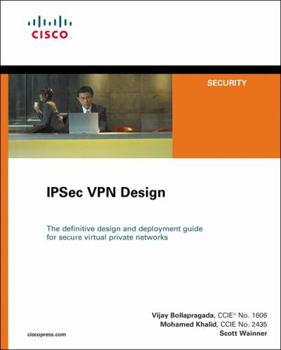Ipsec VPN Design
As the numbers of remote branches and work-from-home employees grows throughout corporate America, VPNs are becoming essential to both Enterprise networks and Service providers. IPSec is one of the more popular technologies for deploying IP based VPNs. IPSec VPN Design provides a solid understanding of design and architectural issues of IPSec VPNs. Some books cover IPSec protocols, but they do not address overall design issues. This book fills that void. IPSec VPN Design consists of three main sections. The first section provides a comprehensive introduction to the IPSec protocol, including IPSec Peer Models. This section also includes an introduction to site-to-site, network-based, and remote access VPNs. The second section is dedicated to an analysis of IPSec VPN architecture and proper design methodologies. Peer relationships and fault tolerance models and architectures are examined in detail. Part three addresses enabling VPN services, such as performance, scalability, packet processing, QoS, multicast, and security. This title also gives exposure to integration of IPSec VPNs with other Layer 3 (MPLS VPN) and Layer 2 (Frame Relay, ATM) technologies. Management, provisioning, and troubleshooting techniques are also be discussed. Case studies highlight design, implementation, and management advice to be applied in both service provider and enterprise environments.





